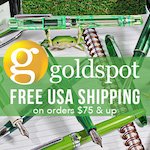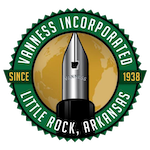(Jeff Abbott is a regular contributor at The Pen Addict. You can find more from Jeff online at Draft Evolution and Twitter.)
It took me a while to give the Pilot Acroball a shot. I'm a fairly committed Uni-ballb Jetstream fan, and I just didn't have a need to try anything else. Fast forward a bit, and I'd heard enough good things about Pilot's hybrid ballpoint offering to give it a fair shake.
What I love about the Jetstream is how smooth and dark the ink is. It's a fantastic experience for a ballpoint, and it's also my go-to pen for ballpoint situations. They're work horses — dependable and well-made. So, that leaves Pilot with a lot of work to do from the start.
I decided to try one of the multi pens first so I could try several colors at once without having a lot of extra pen bodies lying around. Yeah, I could have ordered one pen with several different refills, but the multi pen is way more exciting. They always bring back the nostalgia of using a Bic 4 pen from childhood, except these write much better.
Look and feel
Let's take a look at the outside of the pen first. My first observation is the clip on the Acroball 4. It's a sturdy, spring-loaded clip that feels really nice. That's one thing about the Jetstreams that I don't care for: they have weak clips (especially in their multi pens). When I clip the pen to something, I don't want to worry about it falling off, and the Acroball makes me feel nice and safe.
Another thing that I love about this body is the grip. It's a fat, textured grip that feels good in my hand when writing. It also does a really good job of resisting lint and dust.
The "knocks" for each color are a bit weak, but that's normal for any multi pen. There just isn't much space to include high-quality, sturdy knocks for each cartridge. Yes, some more expensive multi pens have much more sophisticated designs that feel and work great, but they don't cost less than $10 like the Acroball 4.
I went with a clear body, which I'm really happy with. I have a soft spot for demonstrators, and this one fits the bill. There are a few other color options, but most of them feature a partially clear body. The colors only take over the grip and clip pieces on most options. The black one is just...black, and the blue one has a blue transparent body.
Writing
The Acroball is a great writer. Pilot has a really great cartridge here, and I'm happy to use it. But, it just isn't as nice as the Jetstream cartridges. In my experience, the Acroball skips a bit too much when compared to the Jetstream. The colors work well, but the black is a little lighter than I prefer.
To be honest, I can only notice this difference when writing with them on the same page. When I'm just using the Acroball, I don't notice any differences.
Another thing to note in my pen is that the green cartridge is exceptionally scratchy compared to the other 3. I'm not sure if I have a dud cart or if this is normal because of the color and properties of the ink. Who knows. All I know is that I don't use the green cartridge because of the scratchiness.
Overall
The Acroball is a fantastic pen that I highly recommend. Fortunately, this is a pen that most big-box retailers sell, so that means more people are being exposed to it. I'm happy it's out there, but I'm also more happy with my Jetstreams.
I chose the clear model of the Acroball 4, but there are also several other color options.
(JetPens provided this product at no charge to The Pen Addict for review purposes.)




















